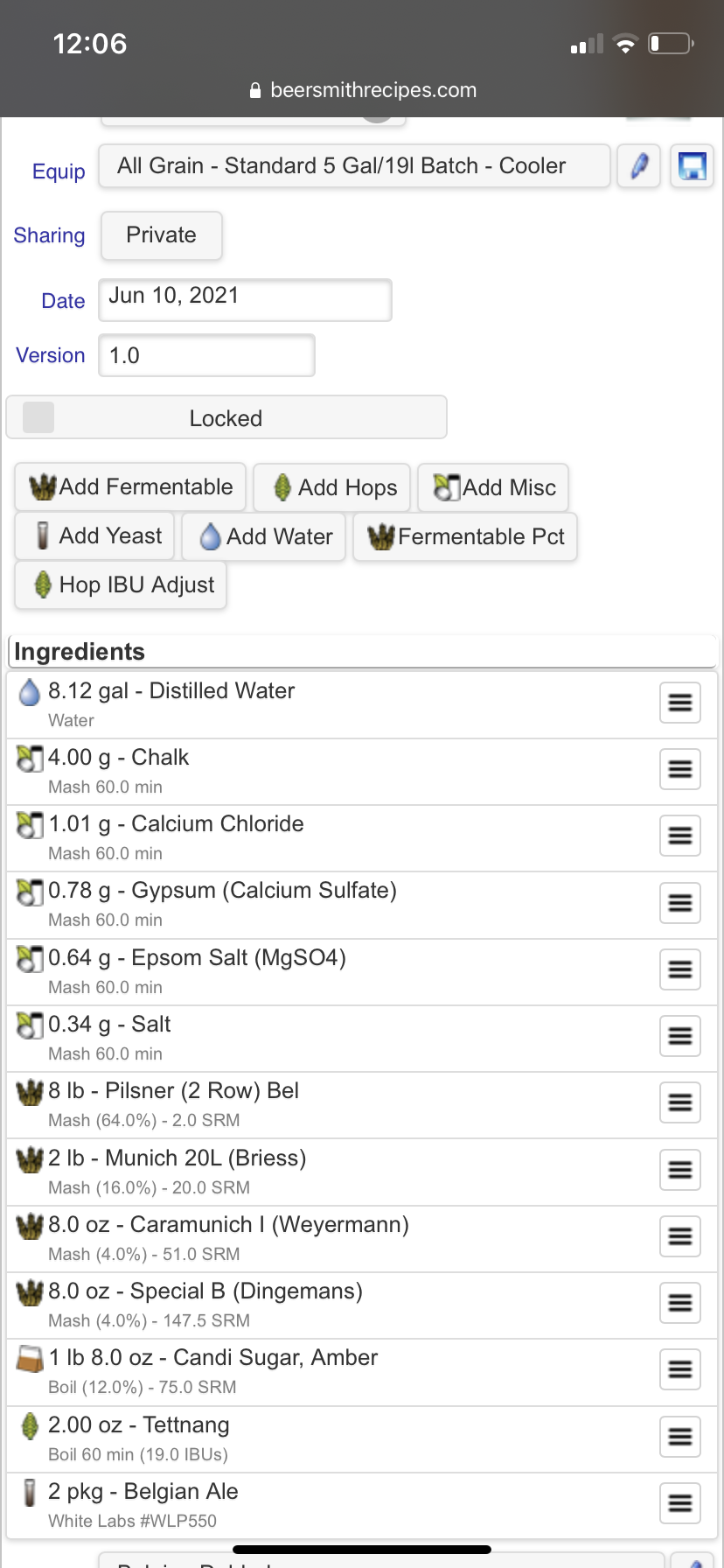I’m planning on my first brew with a stepped mash in the recipe for Saturday. I BIAB and it’s a Belgian Dubbel if it matters. The recipe calls for a protein rest at 121 F. My question is twofold.
1. do you treat temps for a protein rest like a normal mash where you have a strike temp ~10degrees higher than the mash temp?
2. I’m sure a more polarizing question. Is it even worth it? Recipe below for reference.

1. do you treat temps for a protein rest like a normal mash where you have a strike temp ~10degrees higher than the mash temp?
2. I’m sure a more polarizing question. Is it even worth it? Recipe below for reference.





